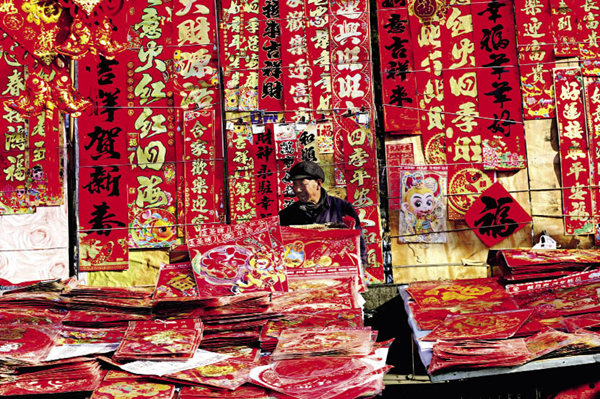Love of Chinese Language Expressed in Couplets
China Today, December 23, 2016 Adjust font size:
History
The couplet is believed to have its roots in the antithetical style of ancient Chinese writing. The earliest known example, from AD 290, is that of a pair of rhyming verses of identical meter. In the ensuing centuries the couplet and other literary forms, including parallel prose and the eight-line poem, drew upon one another. However, the couplet eventually developed and matured into a discrete literary category.
In ancient times it was the tradition at lunar New Year to engrave auspicious sentiments intended to ward off evil spirits on peach wood plaques and hang them on either side of a house gateway. The earliest known couplet was written at Spring Festival 964 by the King of Later Shu. It said: “The New Year is bathed in forefathers’ blessings; the joyous festival promises everlasting youth and wealth.” Writing counterpoints on peach wood blocks thereafter became the custom which the country as a whole followed.

An array of Spring Festival couplets to be pasted on door jambs in the time-honored tradition.
By the 14th century, when paper became commonplace, peach wood plaques had been superseded by inscribed vertical strips of red paper that were pasted on door frames on Spring Festival eve. The practice carries on to this day.
It is said that Zhu Yuanzhang (1328-1398), founding emperor of the Ming Dynasty, ordained that all families in the country should attach couplets to their gates for Spring Festival. The ruler would take great delight in touring the capital city of Jinling (today’s Nanjing) incognito to read those he saw. On one such excursion he noticed a house in the city which had not followed his directive. Upon enquiring why, he learned that all members of the family were illiterate. The monarch thereupon, on a whim, offered to compose a couplet for the household. Inspired by the family’s way of making a living – castrating pigs – the emperor mischievously wrote: “Two hands to incise the path to life or death; one blade to slice the root of sins.”
Writing couplets later became a popular pastime among Chinese scholars, as both a vehicle for literary conversation and word play. The trend carried on through to the 17th century and became a main feature of popular culture. Through cultural exchanges it was also introduced to China’s neighboring countries, where it also thrived.